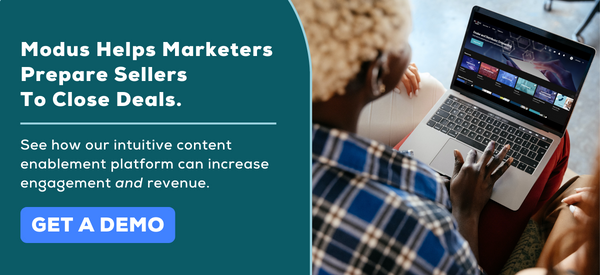You feel the momentum pumping in the air. The product development team has spent hours refining and fine tuning. The customer service team has been trained to answer questions and issues. The entire team is together, aligned, and rallying. Spirits are high.
That’s right, it’s mid-year product release season.
Ahh, queue the famous “Friday Night Lights” quote:
“Full heart, clear eyes, can’t lose.”
While we love riding the wave of sheer optimism, mid-year product releases often fall flat. Especially when the marketing team is now tasked with creating a boatload of new content and distributing it to their sales team. Additionally, you’ve got over-worked sales reps that must consume and absorb everything about the brand new product - and effectively share it with prospects and customers!
But there are ways you can master your next product release to continue riding that optimistic wave. We lay out a proven external launch strategy here:
1. Communicate with Current Customers First
A product release might mean something as small as a quick bug fix or as large as a complete overhaul to an operating system. Regardless of the size of the release, it’s important to communicate with your current customers, first.
It’s no secret that we’re all in the business of making money, and that’s often achieved by acquiring new customers or users. So, it is paramount to put retention and happiness of current customers first, especially when it comes to a product release.
Prior to your release date, marketing should be creating content focused on:
- The why: Why is this release being rolled out? What does it achieve, what is it called, and how will it positively impact current customers or users?
- The how: How and where will it be released? Will customers or users notice a new interface or changes to their user experience?
- The when: Is the release happening all at once, or is it in a tiered, phased approach? What date can customers expect the new and improved product?
Current customers shouldn’t be finding out about the new release at the same time as prospects. Instead, marketing should coordinate information about the update through multiple channels (ex: emails, in-app notifications), and customer success managers and account managers should be ready to reach out to their customers to communicate any changes.
2. Get Real Buyer Approval
There’s nothing riskier than releasing a product iteration without testing. You’d never do it, right?
We can assume (and hope!) the answer is “no, never.” But while you may have done hundreds of hours of internal testing to ward off glitches and poor user experiences, did you actually ask those loyal customers to test it, too?
“If consumers can’t quickly grasp how to use your product, it’s toast.”
Well put, Harvard Business Review.
Prospects need education before they buy a product. That comes as no surprise, as we know the vast majority of the buying cycle happens before a prospect even thinks about talking to a sales rep.
3. Keep Your Team on the Same Page
The information about the release is created. Now what?
There’s always the dreaded chance that sales will still refer to an old, outdated product spec sheet. Or worse, should the release increase or change pricing, sellers are quoting legacy costs that can have serious consequences.
Instead of marketing pushing out the new product release collateral and hoping sellers use it, a content enablement platform can guarantee they use it. For instance:
- Marketing can upload product release content to the platform to simply replace legacy information, so sales never has to question what’s updated and what’s not.
- Marketing can create in-platform announcements—think: carousel banners—that direct sales’ attention to the new product release content.
- Marketing can then gain access to seller interaction data. What piece of collateral is being used most often, and what is progressing the most deals?
- Sellers don’t have to waste time tracking down new product one-sheeters or pricing charts in disorganized folders. Instead, they have the info they need, when they need it to immediately drive value to the buyer.
Not only does a content enablement platform get your team on the same page following a product release, it also dramatically cuts down on the amount of time it takes to get them there. Less time wasted = more time to wow buyers in the sales funnel.
Successful Product Launch with Modus? Check.
Mid-year product release season is here, and a content enablement platform is your secret weapon to nailing it. Modus is here to help.
Modus is a digital sales and content platform built for complicated business initiatives like product launches and releases. Let us show you how you can nail your next release, simply and effectively. Book a demo to see how.


![Why and How to Customize Your Sales Presentations [Infographic]](images/black-and-white-tools.jpg)
